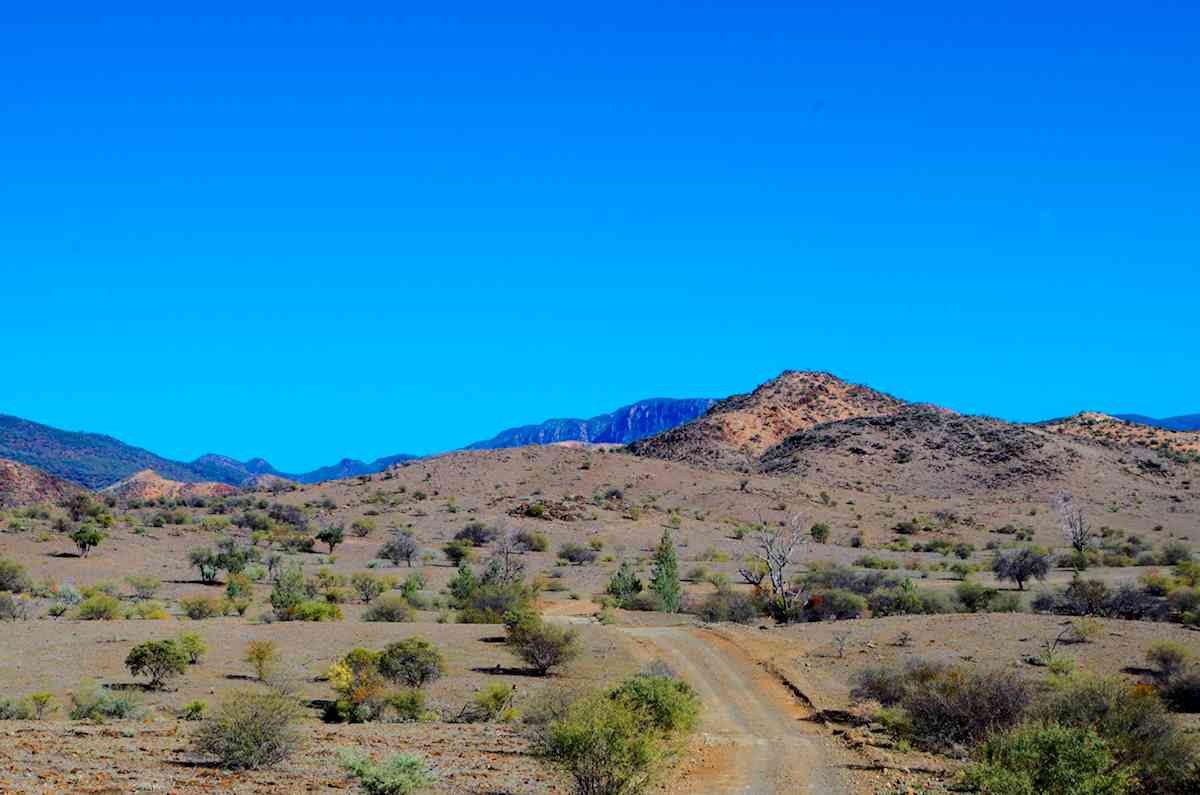I am currently sitting in the camper at Port Rickard on the west coast of the Yorke Peninsula in South Australia.
I have a view of the sea, which at the moment is a menacing dark green-grey and the sky above it is an ominous blue-black. Thunder is crashing and lightening is putting on a spectacular but scary show, with great bolts cascading to ground. It is raining heavily and gale-force winds are howling around the camper.
So, I realised I haven’t posted anything here for a while and this horrible weather is a good excuse to sit inside with the heater on and catch up with some travel writing. Oh, no wet weather camping hero here, thankyou; if it’s cold and wet, sitting inside with the heater on is entirely permitted!
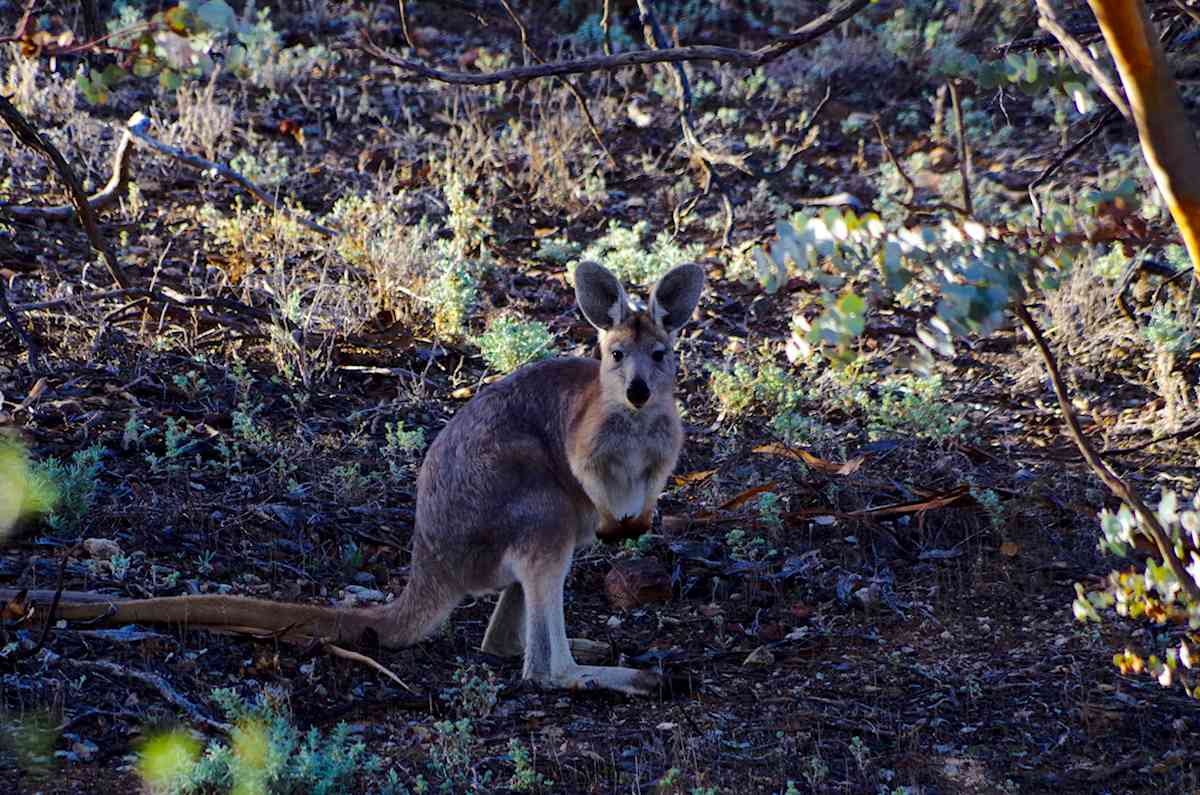
When I left Mount Dare, I drove down the Oodnadatta Track. As I have travelled this part of the country before, I passed through pretty quickly and headed directly to Arkaroola, which is a privately owned nature reserve at the northern end of the Flinders Ranges. It is always a nice place to do a bit of bush camping and explore some of this remote area.
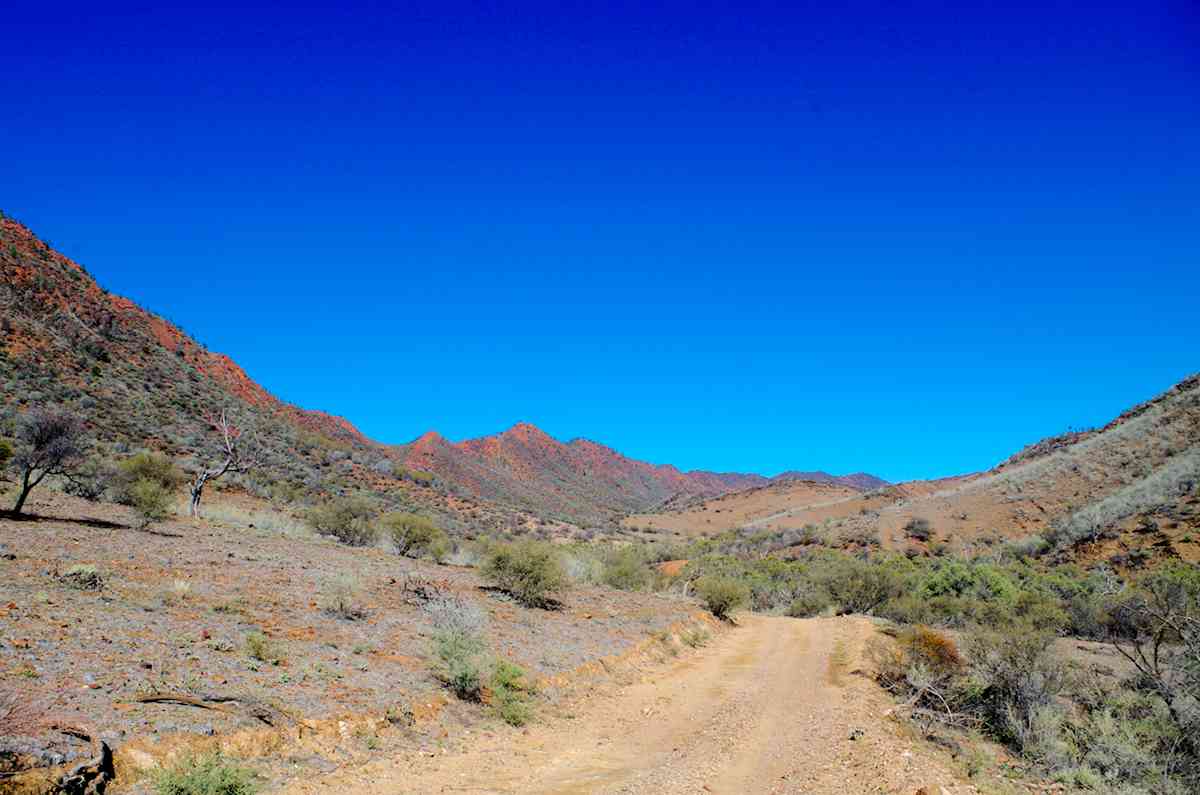
Camping beside a dry creek bed, in the shade of the red river gums is very pleasant way to spend a couple of days (never camp underneath these trees, as they have a nasty habit of dropping large branches). There hasn’t been any rain for ages, so everything is dry, but there are a couple of waterholes that provide some relief for the wildlife.

One of these waterholes is called Nooldoonooldoona. It is really startling to see water in a shady bend of this usually dry river. The green water is not particularly appealing but I guess if you were really thirsty…
The country here is very rugged. There are several spectacular four wheel drive tracks through the place which are totally amazing to do. On a sad note, there is uranium in this area, so there is a constant threat of mining hanging over this beautiful wilderness reserve.
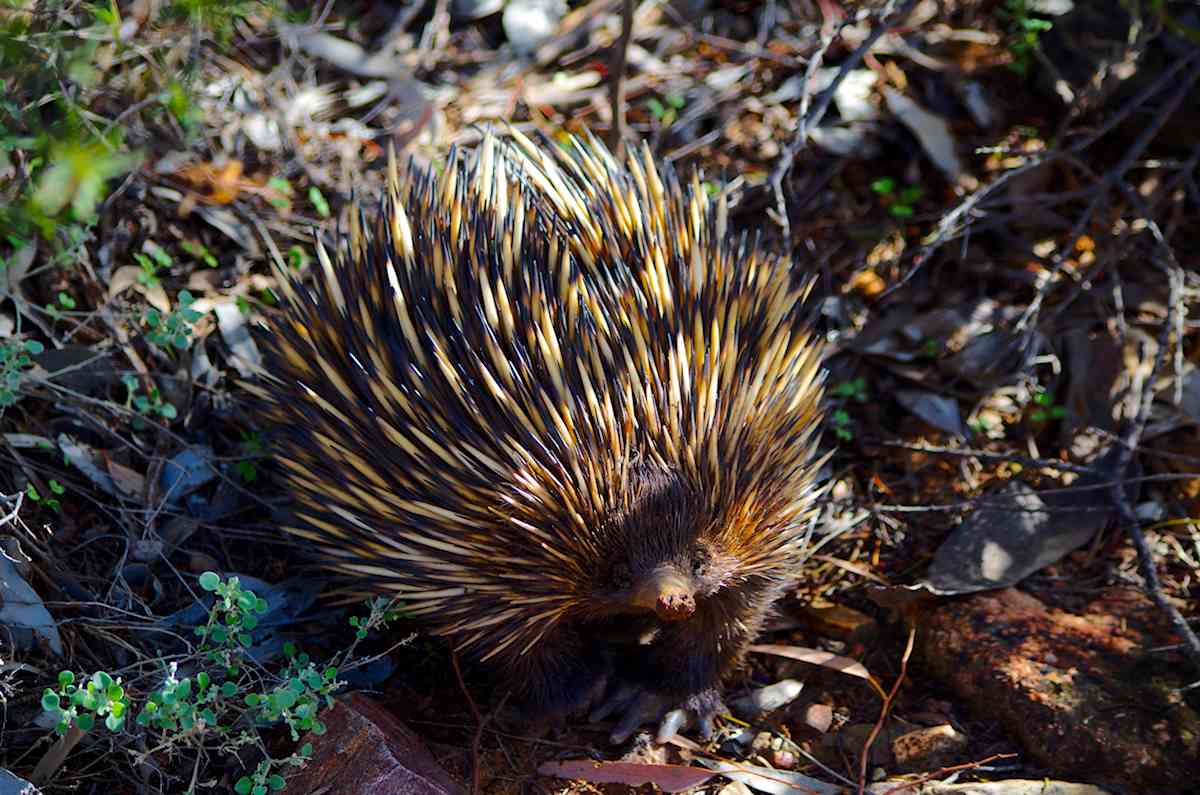
Arkaroola is home to lots of wallabies and emus and it is not unusual to see echidnas snuffling around.
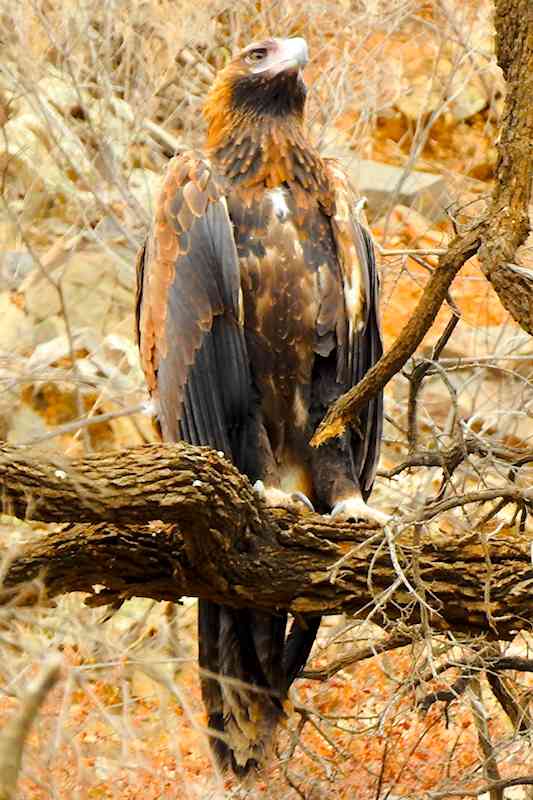
While I was sitting reading quietly one afternoon, this magnificent Wedge-tailed eagle stopped by – presumably he was figuring how many meals I was good for?
Of course, this area was once pastoral land and John Grindell kept sheep near here in the early 1900’s.
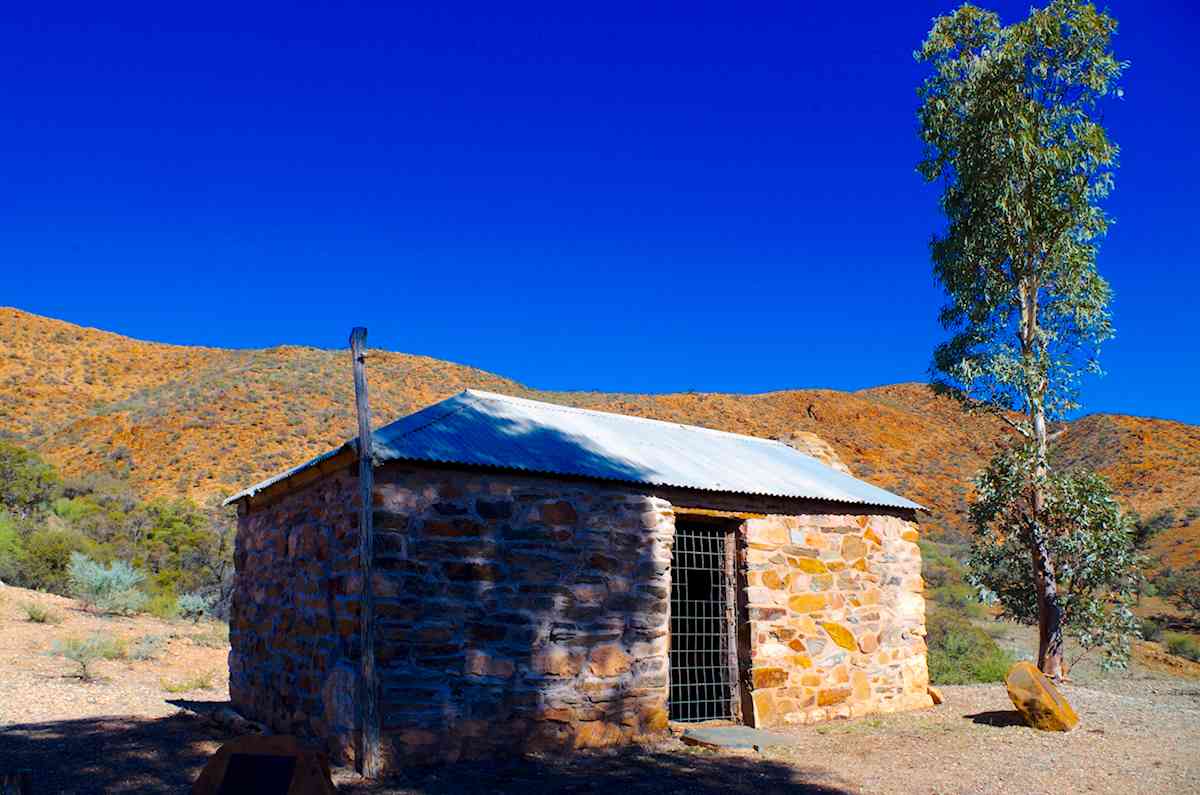 This is the hut where Grindell lived and it is the scene of a gruesome murder!
This is the hut where Grindell lived and it is the scene of a gruesome murder!
Now, Grindell seems to have been a bit umm, unstable? This is extremely rough country, so it is not unreasonable to think sheep may just wander away into the hills to be lost. But Grindell convinced himself that his son-in-law George Snell, who owned the adjoining property, was stealing his sheep.
George was 34 years old and a good bushman. He was very well liked in the area. However, in August 1918 he disappeared after visiting Grindell to help on his property. The locals searched for any sign of him, as it was initially assumed he had just become lost in the bush. But as the hunt went on, the local police called an inspector up from Adelaide to assist.
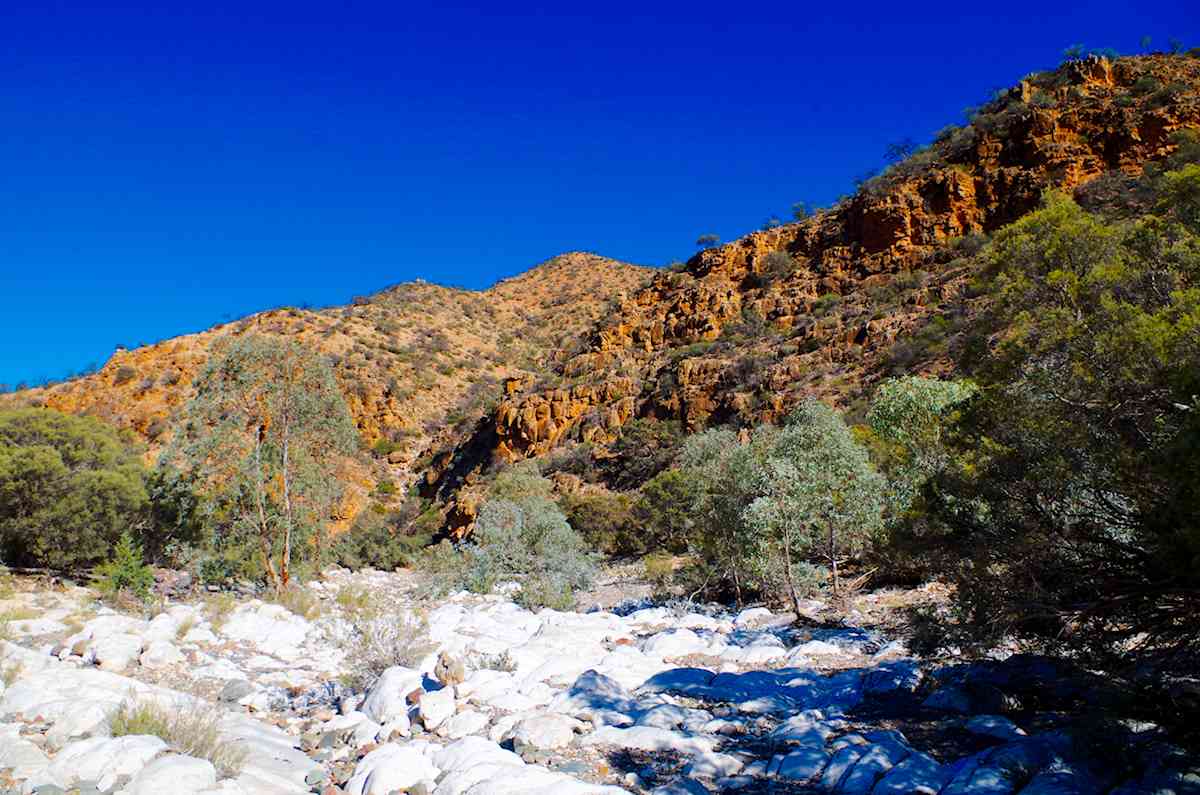
George’s incinerated body was eventually found by Aboriginal trackers, concealed in a remote gully in the surrounding hills.
The police now knew they were hunting for a murderer. Grindell initially denied any knowledge of George’s disappearance, but the inspector from Adelaide was suspicious. He tenaciously pursued the evidence which mounted against Grindell.
Grindell was found guilty of George’s murder. He had shot poor George in cold blood at the hut and then taken his body to the remote gully to dispose of it.
He was originally sentenced to death but this was commuted to life in jail with hard labour. He was released in 1928 and died in 1930, aged 77 years.
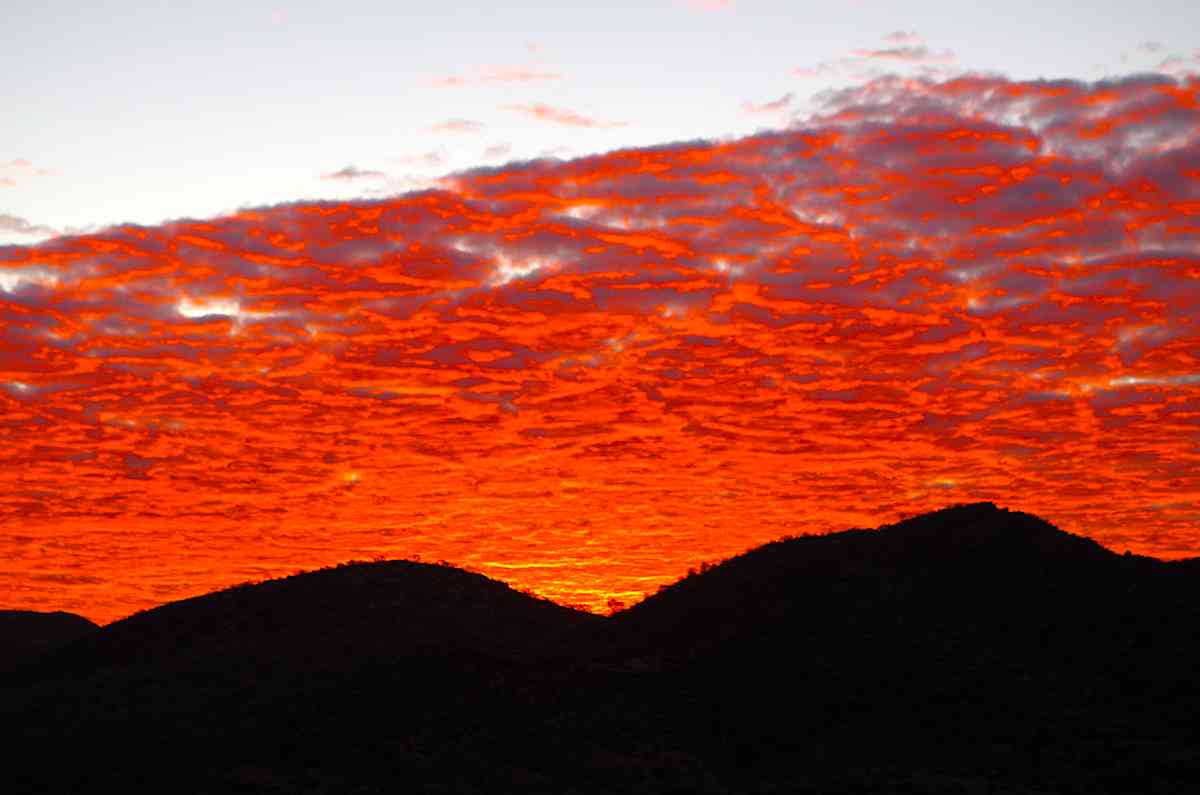
It is hard to imagine such a gruesome act when visiting this spectacular place on a beautiful sunny day. But I bet the atmosphere here is very different in the dark of night…

